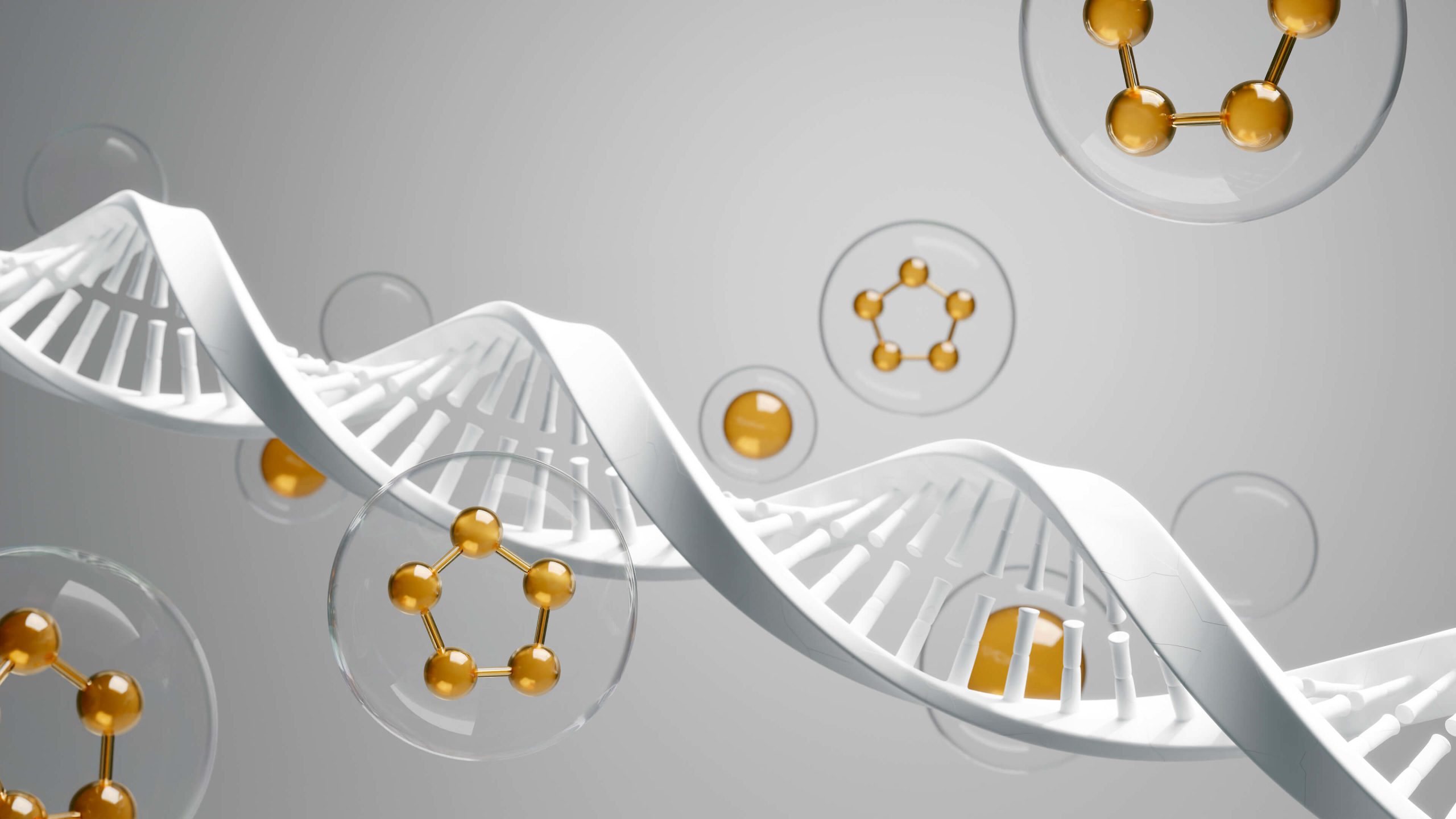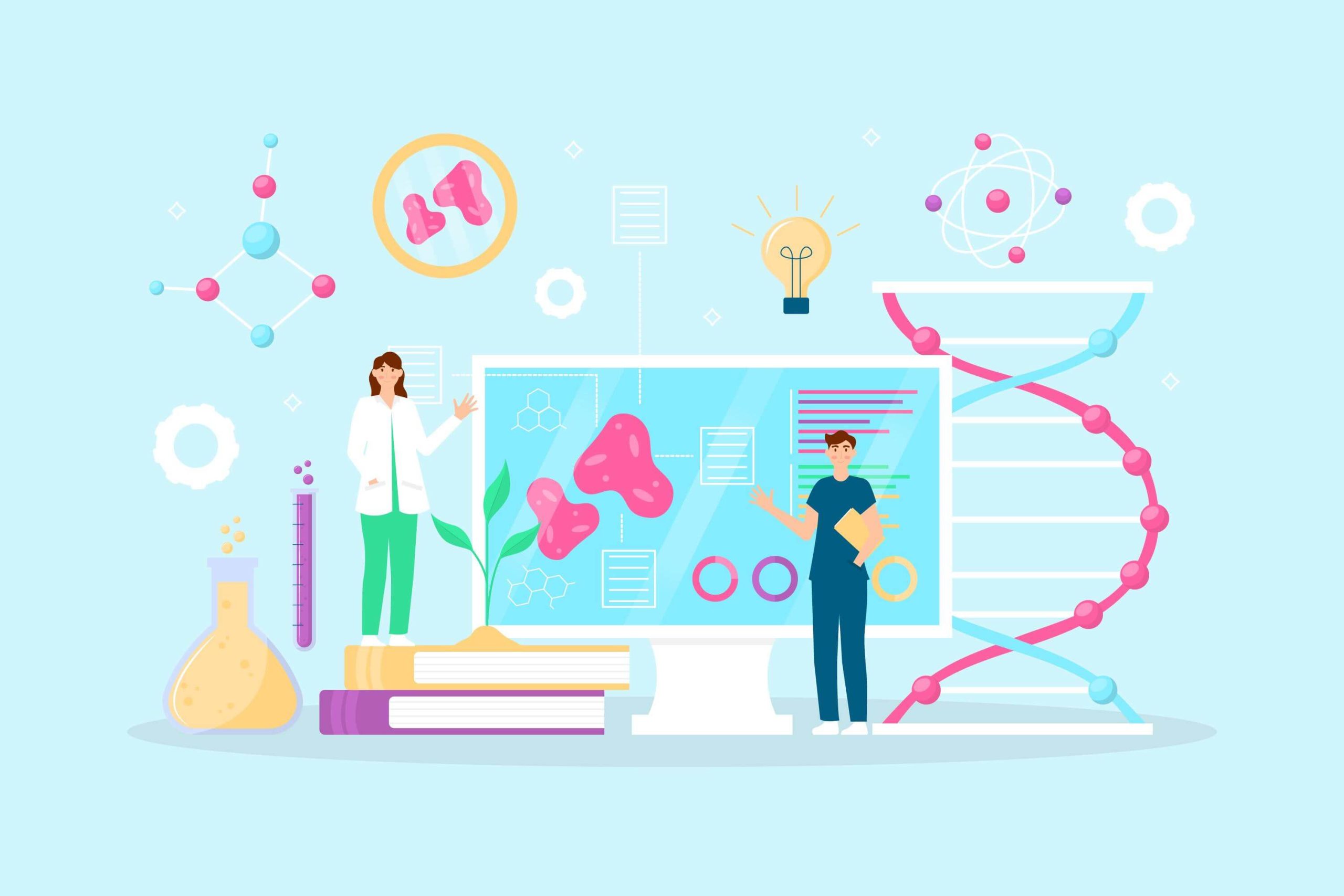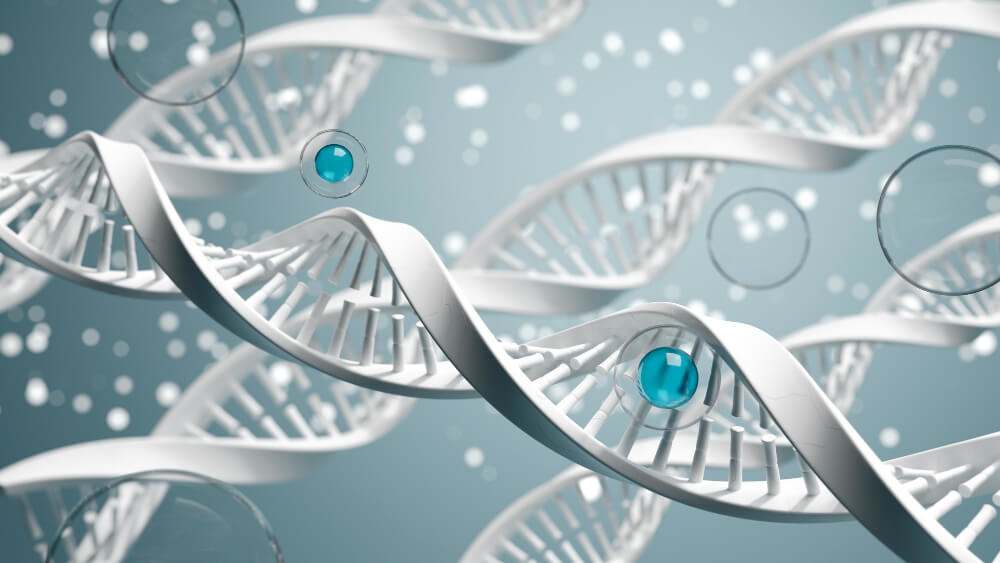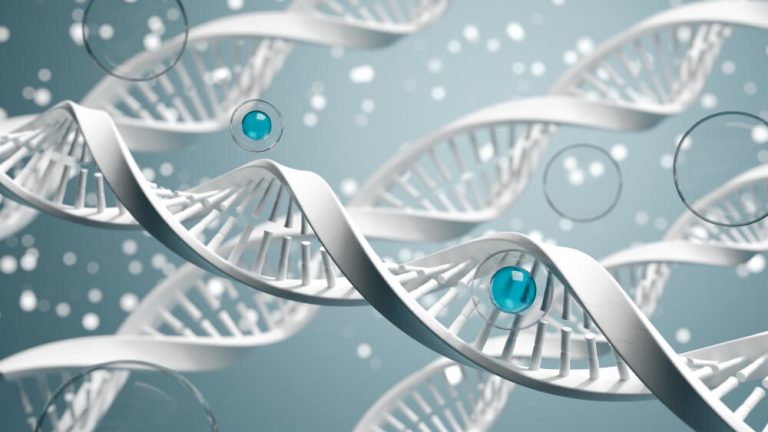Unlocking Your Genetic Blueprint: A Beginner’s Guide to DNA Testing
Have you ever wondered why you have your mother’s eyes or your father’s laugh? The answers lie deep within your cells, written in a complex code called DNA. This intricate instruction manual shapes who you are, from physical traits to your predisposition for certain health conditions. For centuries, this code was a mystery, but today we have the tools to read it.
This technology, known as genetic testing, offers an unprecedented look into our biological makeup. It involves analyzing your DNA to identify changes or variations in your genes that can provide valuable information about your health. Understanding this information can empower you to make more informed decisions about your lifestyle, healthcare, and future planning.
Exploring the world of genetic testing can feel like learning a new language, but it’s a journey of discovery that is becoming more accessible every day. This guide will walk you through the fundamentals, from the basic science of DNA to the various types of tests available and what you can learn from them. We will demystify the process and explore both the incredible potential and the important considerations of looking at your own genetic blueprint.

What Exactly Is DNA and Why Does It Matter?
To understand genetic testing, we first need to talk about DNA. Think of your body as an incredibly complex and detailed building. Your DNA, or deoxyribonucleic acid, is the master blueprint for that entire building. It contains all the instructions needed for your body to build itself, grow, function, and repair its parts.
This blueprint is organized into sections called genes. If DNA is the entire cookbook, then a gene is a single recipe. Each gene provides the instructions for making a specific protein, and proteins are the workers that perform countless jobs in your body, from carrying oxygen in your blood to fighting off infections.
These genes are tightly packaged into structures called chromosomes, which reside inside the nucleus of almost every cell in your body. Humans typically have 23 pairs of chromosomes, inheriting one set from each parent. This is why you share traits with your family members; you inherited a mix of their genetic recipes.
Sometimes, there are variations or ‘spelling errors’ in these recipes. These genetic variants can be harmless, leading to unique traits like different hair colors. However, other variations can alter a gene’s instructions in a way that may increase the risk for certain health conditions, which is where genetic testing becomes a powerful tool for insight.

What Are the Different Kinds of Genetic Tests?
Genetic testing is not a one-size-fits-all field. Different tests are designed to answer different questions, depending on your health concerns, family history, and personal curiosity. The type of test a healthcare provider recommends will be tailored to your specific situation and what information you hope to gain.
Some tests look at a single gene, while others scan for changes in multiple genes at once. More comprehensive tests, like whole exome or whole genome sequencing, analyze a much larger portion of your DNA. Understanding the main categories can help you navigate your options and have more productive conversations with your doctor.

How do diagnostic tests work?
Diagnostic testing is used to identify or rule out a specific genetic condition. If you or your child has symptoms of a particular disorder, a doctor might use a diagnostic test to confirm the underlying genetic cause. This can provide a definitive answer, which is often a crucial step in managing the condition.
For example, if a child shows signs of cystic fibrosis or muscular dystrophy, a diagnostic test can analyze the specific genes associated with those diseases. A confirmed diagnosis helps healthcare teams develop the right treatment plan, anticipate potential health issues, and provide families with accurate information and support.

What is predictive and presymptomatic testing?
These tests are for people who do not have symptoms of a genetic condition but have a family history that puts them at a higher risk. Predictive testing identifies genetic variations that increase a person’s chance of developing a condition later in life, such as certain types of cancer or heart disease. It provides a probability, not a certainty.
Presymptomatic testing is slightly different. It can determine with more certainty if someone will develop a genetic disorder before any symptoms appear. This is primarily for conditions caused by a single gene mutation, like Huntington’s disease, where inheriting the gene variant almost guarantees the disease will manifest.

What does carrier screening tell you?
Carrier screening is designed for individuals or couples who are planning to have children. This type of test can determine if you ‘carry’ a genetic variant for a specific condition that you could pass on to your child. Carriers are typically healthy and show no symptoms of the condition themselves.
Many inherited conditions, like cystic fibrosis and sickle cell anemia, are autosomal recessive. This means a child must inherit a copy of the faulty gene from both parents to have the disease. Learning about your carrier status can help you understand your reproductive risks and make informed decisions about family planning. Many prospective parents explore carrier screening for genetic conditions to prepare for the future.

What is pharmacogenomic testing?
Have you ever wondered why a certain medication works well for one person but not for another? The answer could be in your genes. Pharmacogenomic testing, or PGx, examines how your unique genetic makeup influences your body’s response to different drugs. It can help predict which medications might be most effective for you and which could cause harmful side effects.
This information allows for more personalized medicine. Instead of a trial-and-error approach, doctors can use your genetic profile to help select the right drug and dosage from the start. Understanding the clinical utility of pharmacogenomic (PGx) testing is becoming increasingly important for optimizing treatments for conditions ranging from depression to heart disease.

What about direct-to-consumer (DTC) tests?
Direct-to-consumer genetic tests are those you can order online or buy in a store without a doctor’s prescription. These tests have become very popular for exploring ancestry and learning about non-medical traits like your earwax type or caffeine metabolism. Some also offer health-related information, such as your genetic predisposition for certain conditions.
While DTC tests can be fun and informative, it is important to approach them with caution. The health information they provide may not be as comprehensive or accurate as clinical-grade tests ordered by a doctor. The U.S. Food and Drug Administration regulates some of these direct-to-consumer tests, but it is crucial to remember that their results should not be used for medical decisions without first consulting a healthcare professional.

How Is a Genetic Test Performed?
The process of getting a genetic test is often surprisingly simple from the patient’s perspective. It all starts with collecting a biological sample that contains your DNA. The most common methods are a simple blood draw from a vein in your arm or a saliva sample collected by spitting into a tube.
For some tests, like those done on pregnant women, other samples like amniotic fluid might be used. In other cases, a cheek swab, where a small brush is rubbed against the inside of your cheek to collect cells, is sufficient. The method used depends on the specific test being performed and the amount of DNA required for analysis.
Once your sample is collected, it is sent to a specialized laboratory. There, technicians extract the DNA from your cells and use advanced sequencing machines to ‘read’ the genetic code in the areas of interest. This could mean looking at a single gene, a panel of genes, or your entire genetic blueprint.
The analysis can take anywhere from a few days to several weeks, depending on the complexity of the test. The lab then compiles the findings into a report, which is sent back to your healthcare provider or directly to you, in the case of some DTC tests. This report details any significant genetic variations that were found.

What Should You Expect from Your Genetic Test Results?
Receiving your genetic test results can be an emotional experience, filled with anticipation and sometimes anxiety. The report itself can be complex, which is why it is often best reviewed with a doctor or a genetic counselor. They can help you understand what the findings mean for your health and your family.
Results typically fall into one of three categories. A positive result means the test found a specific genetic variation known to be associated with a disease. A negative result means no such variation was found. However, a negative result does not always mean you have zero risk, as there may be other genetic or lifestyle factors at play.
A third possibility is an uncertain or ambiguous result, often called a ‘variant of uncertain significance’ or VUS. This means a genetic variation was found, but science has not yet determined whether it is harmless or associated with disease. This can be frustrating, but as research progresses, the significance of these variants may become clearer over time.
Interpreting results, especially from DTC tests, requires professional guidance. Many people bring their raw data to their doctors, who must then determine its clinical relevance. This has created a new challenge for healthcare providers, leading to the development of protocols for managing patient DTC andme data to ensure it is used responsibly and effectively in a clinical setting.

What Are the Benefits of Genetic Testing?
The primary benefit of genetic testing is the power of knowledge. It can provide explanations for existing health problems, offer insights into future risks, and guide important life decisions. For many, simply having a definitive diagnosis can bring a sense of relief and end a long and stressful ‘diagnostic odyssey’.
This knowledge empowers you to be proactive about your health. If you learn you have a higher genetic risk for a condition like heart disease or breast cancer, you and your doctor can create a personalized screening and prevention plan. This might include more frequent check-ups, lifestyle changes like diet and exercise, or preventative treatments.
Genetic information is a cornerstone of personalized medicine. It helps tailor medical care to your individual needs, moving away from a one-size-fits-all model. This is especially true in pharmacogenomics, where testing can prevent adverse drug reactions and ensure you get the most effective medication at the right dose.
For clinicians, these insights are invaluable. Understanding a patient’s genetic predispositions allows for a more holistic and forward-thinking approach to care. This mindset is central to innovative fields like regenerative medicine, and many forward-thinking clinics are learning how to add regenerative services to a primary care practice by integrating advanced diagnostics like genetic testing.

Are There Any Risks or Limitations to Consider?
While genetic testing offers immense benefits, it is essential to be aware of its limitations and potential downsides. The information can have a significant emotional and psychological impact. Learning about an increased risk for a serious disease can cause anxiety, stress, or sadness for you and your family members.
Privacy is another major concern. Your genetic information is deeply personal, and it is natural to worry about who might have access to it. In the United States, a federal law called the Genetic Information Nondiscrimination Act (GINA) offers some protection. It prevents health insurers and most employers from discriminating against you based on your genetic data.
However, GINA’s protections do not extend to life insurance, disability insurance, or long-term care insurance. This is a critical factor to consider before undergoing testing, as a result could potentially affect your ability to get these types of coverage in the future.
Finally, it is important to remember that genes are not destiny. Most common diseases, like type 2 diabetes and high blood pressure, are influenced by a complex interplay of multiple genes and environmental factors. A genetic test provides one piece of the puzzle, but your lifestyle choices remain incredibly powerful in shaping your health outcomes.

How Does Genetic Testing Help with Rare Diseases?
For families affected by rare diseases, genetic testing can be a lifeline. A rare disease is defined as a condition that affects a small percentage of the population. There are thousands of such diseases, and about 80 percent of them are believed to have a genetic origin. Yet, getting an accurate diagnosis can be incredibly difficult and time-consuming.
This is where advanced genetic testing, like whole exome or whole genome sequencing, plays a transformative role. By analyzing large portions of a person’s DNA, these tests can uncover the specific genetic mutation responsible for the symptoms, even if the condition is extremely uncommon. This can end years of uncertainty for patients and their families.
An accurate genetic diagnosis is the first step toward finding effective management strategies and connecting with other families affected by the same condition. It also fuels research. When scientists identify a gene linked to a rare disease, they can study it to understand the disease mechanism and work toward developing targeted therapies. For countless individuals, genetic testing is the key that unlocks a path forward.

What is the Future of Genetics?
The field of genetics is evolving at a breathtaking pace. The cost of sequencing a human genome has plummeted over the last two decades, making genetic analysis more accessible than ever before. As technology continues to improve, genetic testing will likely become a routine part of healthcare, integrated into everything from newborn screening to elder care.
We can expect to see more sophisticated tests that provide a more nuanced understanding of our risk for complex diseases. The science of epigenetics, which studies how our behaviors and environment can cause changes that affect the way our genes work, will add another layer of personalization to health recommendations.
As this technology becomes more widespread, public education and genetic literacy are more important than ever. It is vital that people understand the basics of genetics to make informed decisions and engage with their health data responsibly. Organizations are working to help the public discover genetics and appreciate its relevance to their lives and to society as a whole.
Genetic testing holds the promise of a future where medicine is more predictive, personalized, and preventative. By reading the unique instruction manual written in our DNA, we can better understand ourselves, protect our health, and pass on a legacy of well-being to future generations. It is a powerful tool that, when used wisely, can illuminate the path to a longer, healthier life.
Frequently Asked Questions

Can I choose not to receive incidental or secondary findings from my test?
Yes, in most cases, you have the right to decide whether you want to be informed about incidental or secondary findings. This choice is a critical part of the informed consent process that should happen before your test or scan is performed. Your doctor or a genetic counselor will discuss the possibility of unexpected discoveries and ask for your preference, allowing you to "opt out" of receiving certain types of information.
It is important to have this conversation upfront, as policies can vary between medical institutions and laboratories. While patient autonomy is a core ethical principle, some specific, highly actionable findings may have different reporting protocols. Clearly communicating your wishes to your healthcare provider ensures your preferences are documented and respected throughout the testing process.

What is the emotional impact of receiving an unexpected finding, and how can I prepare for it?
Receiving an unexpected health finding can trigger a wide range of emotions, including anxiety, shock, fear, and confusion about what it means for your future. It’s completely normal to feel overwhelmed by information that you were not prepared for. Acknowledging that these feelings are a valid response is the first step in managing the emotional impact.
To prepare, you can talk with your provider about the possibility of such findings before the test, which can help set realistic expectations. If you do receive an unexpected result, lean on your support system, which includes your healthcare team, genetic counselors, family, and patient advocacy groups. These resources can provide clarity, context, and emotional support to help you process the news and make informed decisions.

Who is responsible for explaining these findings to me and guiding my next steps?
The primary responsibility for delivering and providing an initial explanation of any incidental or secondary findings lies with the healthcare provider who ordered the test. This professional can interpret the result within the context of your overall health and medical history. They will determine the immediate clinical significance and whether further action is needed.
Following the initial discussion, you will often be referred to other experts for more specialized guidance. For instance, a genetic finding would be best explained by a genetic counselor, while a suspicious spot on an organ would be handled by a specialist like an oncologist or nephrologist. This team-based approach ensures you receive detailed information, understand your options for follow-up testing, and can create a clear management plan.
Discover the most comprehensive functional medicine training, longevity training, and biohacking certification programs designed specifically for healthcare professionals, medics, and clinic owners who want to master regenerative medicine protocols and anti-aging therapies.







